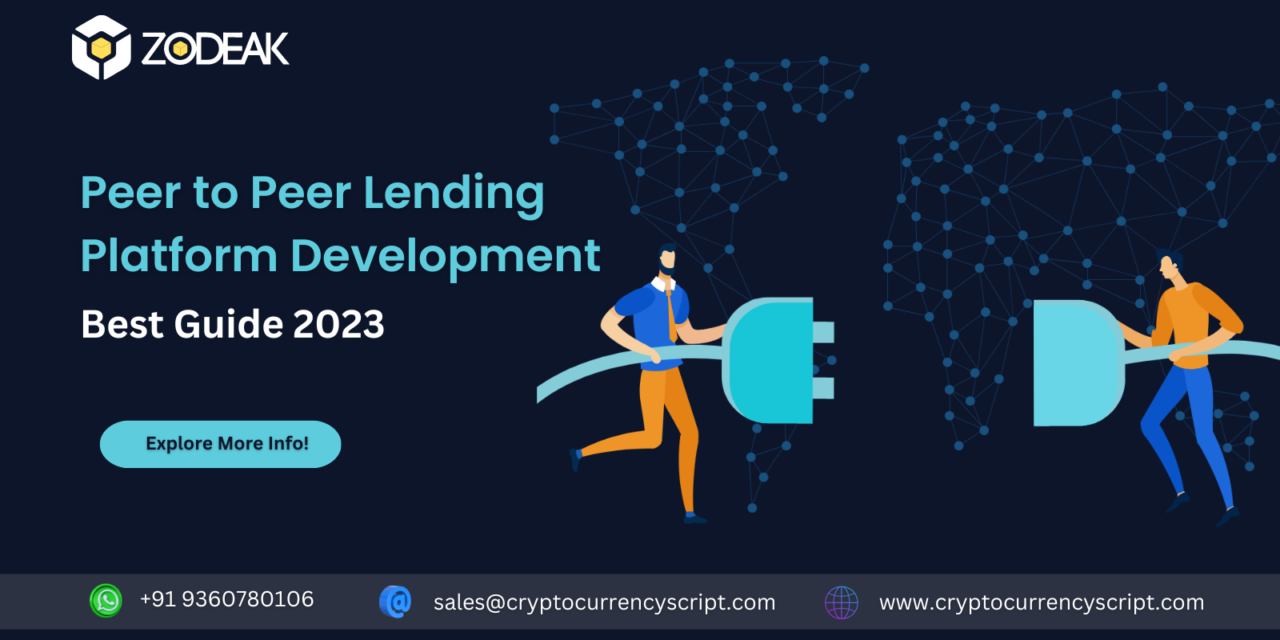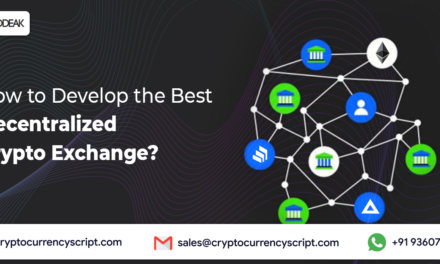In the crypto space, Decentralized Finance (DeFi) is constantly advancing, and one of the most exciting developments is Peer-to-Peer Lending. This groundbreaking method offers individuals and startup businesses the opportunity to access and manage cryptocurrencies in ways that were previously impossible.
Unlike traditional crypto exchanges, P2P lending provides a wealth of benefits, from investment opportunities for crypto holders to accessibility for newcomers in the crypto ecosystem. In this blog, we’ll explore what Peer to Peer lending is, its impressive features, how it works, and its revenue model.
Let’s dive in!
What is Peer to Peer Lending?
Peer to Peer Lending is a financial method of granting or lending cryptocurrencies directly to one another without the need for intermediaries like in crypto exchange. Using blockchain technology and smart contracts, the P2P platforms link users through matching engines to engage in their funding activities.
When using Peer to Peer lending platforms, crypto startups or individuals must compile a detailed list of the cryptocurrency loans they are seeking. This list will be thoroughly reviewed by potential lenders or institutional investors who will then make informed decisions regarding whether or not to lend the desired cryptos.
Moreover, the P2P lending platform for cryptocurrencies offers many benefits to users. It provides an investment opportunity for individuals to earn interest on the cryptocurrency they hold in their wallets. At the same time, people who don’t have enough crypto or have never had access to a crypto exchange before can benefit greatly from this platform.
Besides, this Peer to Peer lending platform includes features required by lenders and borrowers, now let’s go through them one by one below.
- Admin dashboard
- User dashboard
- Order matching
- Transaction history
- KYC verification
- Two-factor authentication
- Crypto wallet
- Refinance
- Fast loan processing speed
- Liquidity solutions automatic
- Liquidation mechanisms
- Collateralization
- Risk assessment
- Asset management tools
- Interest rate mechanisms
- Diverse lending options
These features that Peer to peer lending platforms should offer to their users. Additionally, businesses can customize or include their idea in these features to meet their specific needs.
Understanding these features is crucial for the successful implementation and provision of essential components to the platform’s users. It is equally important to have a clear understanding of the working process of the P2P platform to ensure the development of a better platform.
For a better understanding, you can approach a p2p crypto exchange development company. Who leads the crypto market with a team of blockchain experts.
How Does a Peer-to-Peer Lending Platform Work?
A peer-to-peer lending platform serves as a financial marketplace for users to either lend or borrow cryptocurrencies. These platforms typically operate using a peer-to-peer exchange model, using blockchain, and smart contracts to facilitate transactions and enforce loan terms.
Here’s a list of the functioning of peer-to-peer lending platforms:
User Registration
Users are required to create an account on the platform, provide essential personal and financial information, and complete mandatory Know Your Customer (KYC) verification processes.
Lending
Those interested in investing, also known as lenders, deposit their cryptocurrencies into the platform’s wallet. This wallet securely holds the funds and manages the lending process.
Borrowing
Individuals seeking loans, or borrowers, can request specific amounts of cryptocurrencies. Borrowers are typically required to provide collateral, such as other cryptocurrencies, tokens, or stablecoins, to secure the loan and mitigate the lender’s risk in case of default.
Loan Terms
Loan terms, including interest rates, repayment periods, and collateralization ratios, are agreed upon between the borrower and the lender. These terms are typically pre-established and confirmed before initiating the loan.
Order Matching
The peer-to-peer lending platform matches borrowers with available lenders based on the agreed-upon loan terms, interest rates, and collateral requirements. This process is automatically facilitated by smart contracts.
Smart Contracts
Once the lender and borrower reach an agreement, a smart contract is created and executed on the blockchain. The smart contract ensures the transfer of loan funds to the borrower and holds the collateral provided by the borrower as security.
Repayment
Borrowers are obligated to repay the loan amount, along with any accrued interest, within the mutually agreed-upon timeframe. Failure to meet repayment terms may result in penalties or the loss of collateral, as determined by the smart contract.
Interest Payments
Lenders earn interest on the cryptos they have lent out to borrowers. The interest rate can vary depending on factors like the platform used, the borrower’s creditworthiness, and the loan duration. Interest payments are usually credited to the lender’s account periodically.
Withdrawal
Lenders have the flexibility to withdraw their funds from the platform’s wallet at any time, subject to potential lock-up periods or withdrawal restrictions imposed by the platform.
In addition to these fundamental functions, some peer-to-peer lending platforms offer advanced features like flash loans, allowing users to access loans without providing collateral. However, these loans must be repaid within a single transaction block.
After reading about the working process of the P2P segment, a question may arise in your mind, how to earn revenue using the above working process?
Revenue generating way using Peer to Peer Lending
As a Peer to Peer lending platform owner, you can employ various revenue streams to sustain your operations and generate profits. Here are some common ways you generate revenue:
Interest Charges
When borrowers receive loans through P2P lending platforms, they are generally charged an interest rate. This interest rate plays an important role in contributing to the revenue of the platform.
Loan Origination Fee
When taking out a loan through certain platforms, borrowers may encounter an upfront fee to cover the costs of processing and facilitating the loan. This fee is meant to support the administrative aspects of the borrowing process and ensure a smooth transaction.
Flash Loan Payment
In some cases, P2P lending platforms charge a fee for facilitating flash loans, which are short-term, high-risk loans that are repaid within the same transaction block. These fees can prove to be quite lucrative for the platform, given the velocity and volume of transactions involved.
Liquidation Penalty
P2P lending platforms that offer collateralized loans may impose liquidation penalties on borrowers who fail to maintain the required collateral levels.
Charges for Additional Services
Peer to peer lending platform frequently provides supplementary services like credit scoring, insurance, or dispute resolution. These services may attract additional fees, which contribute to their overall revenue.
Collateral Management Fees
Platforms that require borrowers to provide collateral may charge fees for managing and securing the collateral assets. This helps cover the costs of collateral management and increases revenue.
Transaction Fee
P2P lending platforms may charge transaction fees for every loan originated or serviced on their platform. These fees are typically nominal but can accumulate due to the high volume of transactions.
Withdrawal Charges
Some platforms charge users a fee when they withdraw funds from their accounts. This fee encourages users to keep their funds on the platform, generating additional revenue for the platform.
Native Tokens
In the case of blockchain-based P2P lending platforms, native tokens are often used for various purposes within the ecosystem. The platform may generate revenue by issuing and selling these tokens to users, and investors, or for use in various transactions.
Staking
Some P2P lending platforms offer staking services, allowing users to lock up their tokens in exchange for rewards or benefits. The platform may earn revenue through staking fees or by participating in the staking process itself.
There is great potential for revenue generation in peer-to-peer lending, and with the right strategy, your platform can achieve great success. You have the flexibility to customize revenue models to suit your unique business model, target audience, and location.
And as your platform evolves, so too can your revenue streams, offering even more opportunities. After learning about the various features, operations, and potential revenue models, you are now left wondering where to find the best Peer to Peer lending software.
Implement Your Peer to Peer Lending Development with Zodeak
Zodeak as a DeFi development company the perfect partner for those seeking a trustworthy companion in P2P lending platform development. You can depend on their proven ability to provide blockchain-based solutions, from the initial idea to the platform’s launch. Our vast knowledge of blockchain technology and finance will guarantee that your crypto lending platform is secure, compliant, and at the forefront of the ever-changing DeFi space.
If you’re considering entering this market, a well-planned development process and a trusted partner like Zodeak can set you on the path to success in launching your Peer to Peer lending. Feel free to reach out to our expert team at Zodeak for any further assistance you may require.





